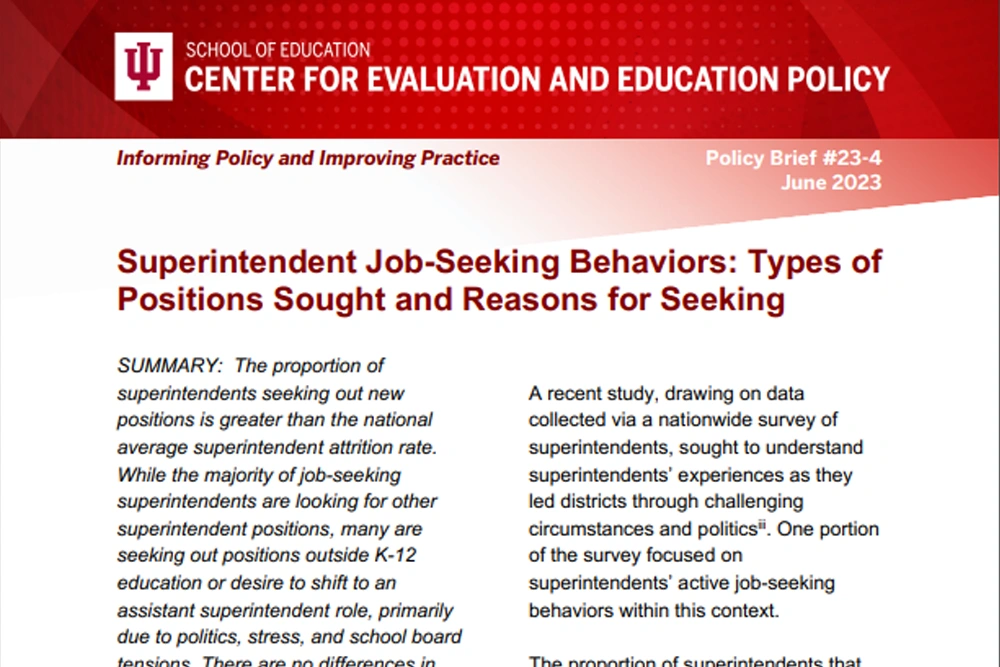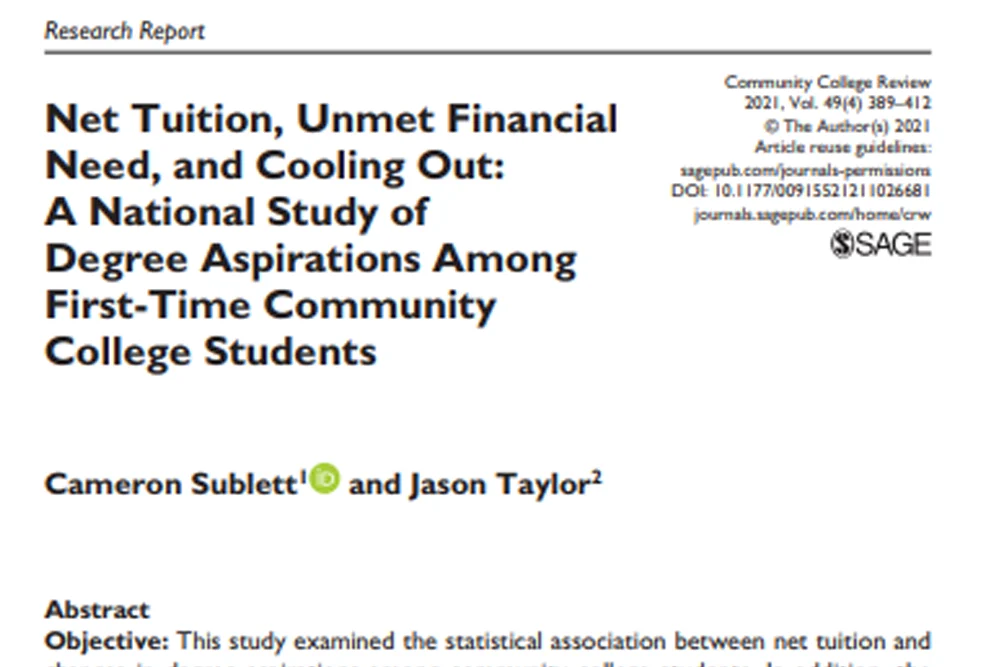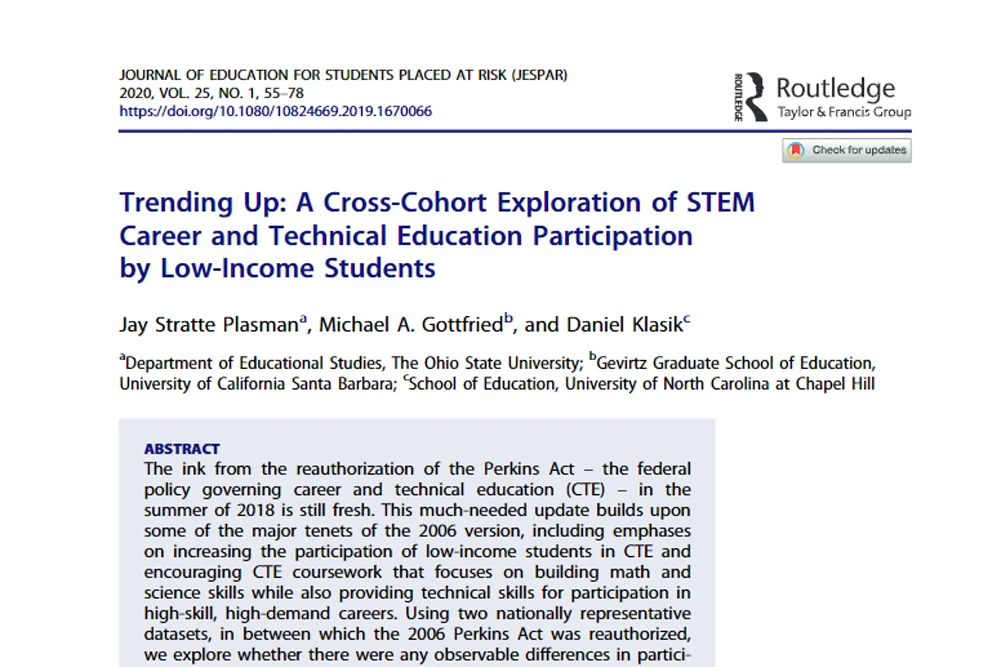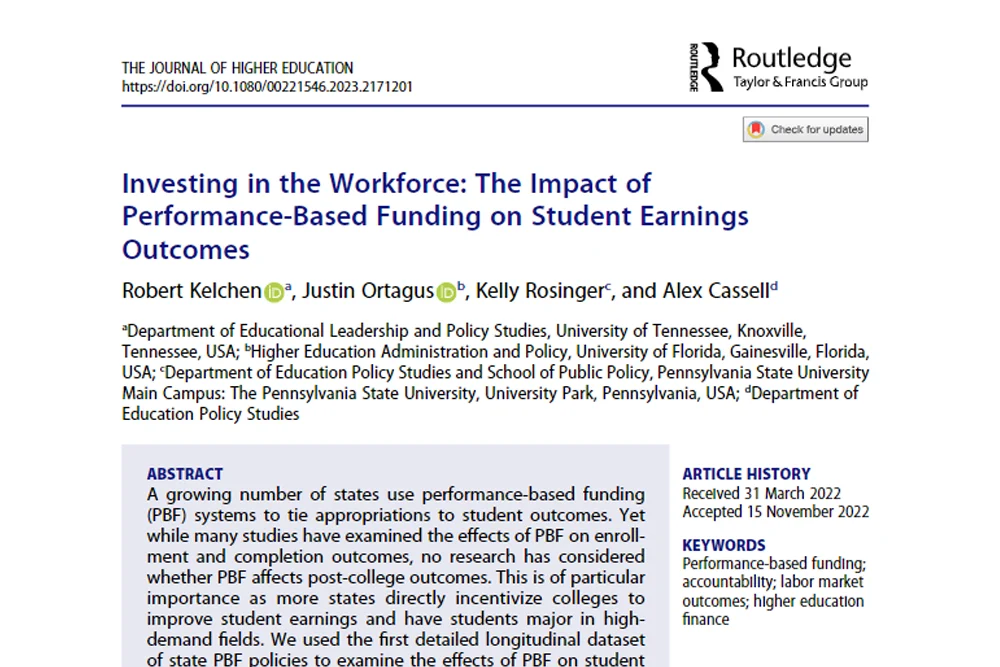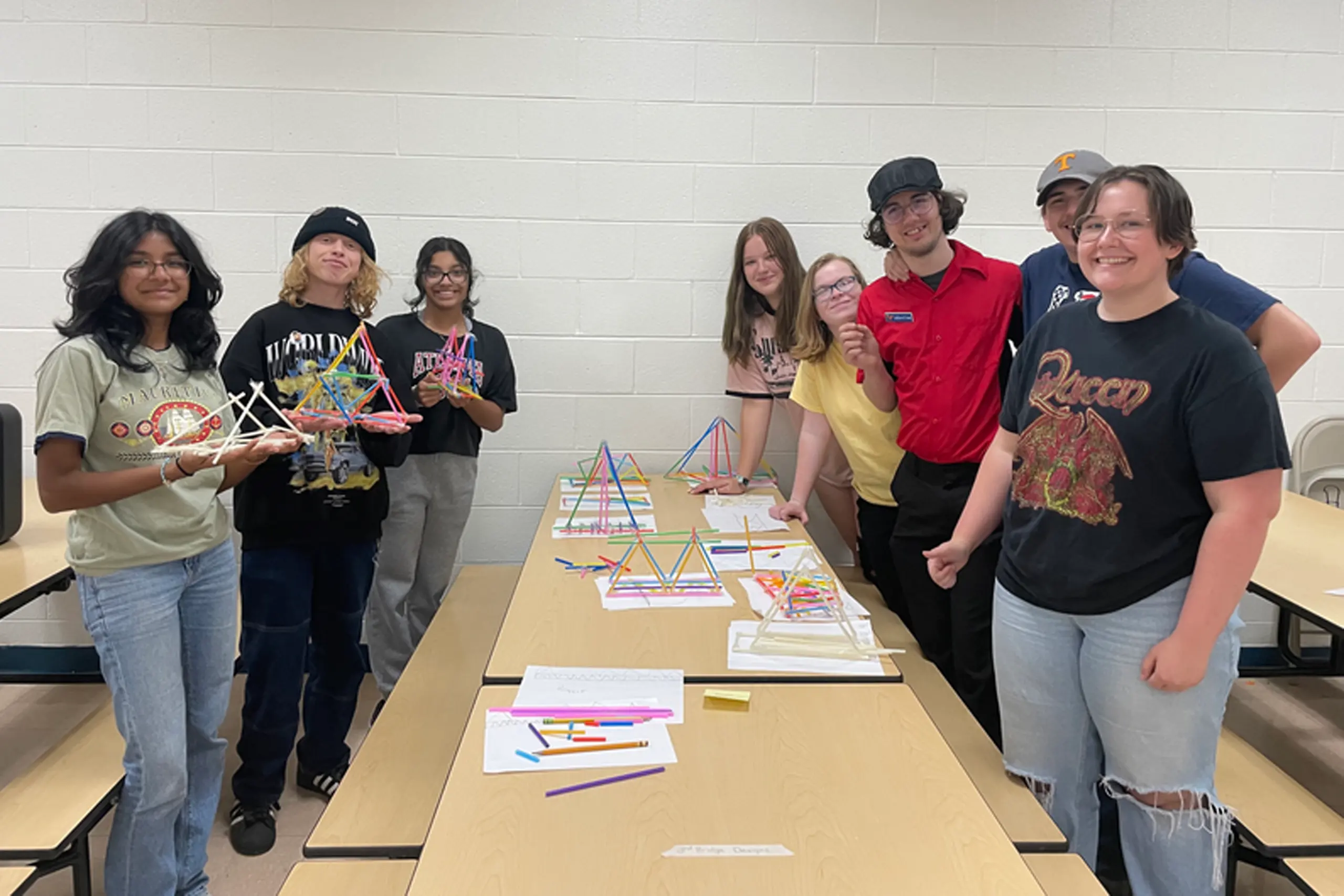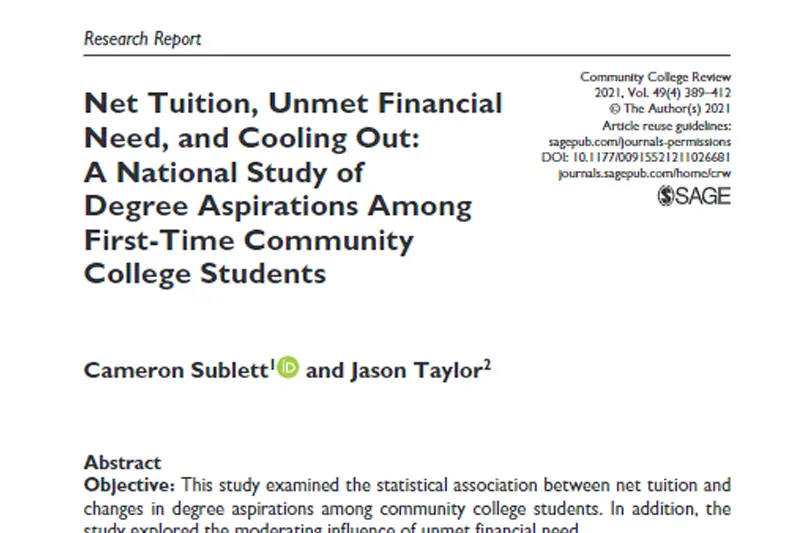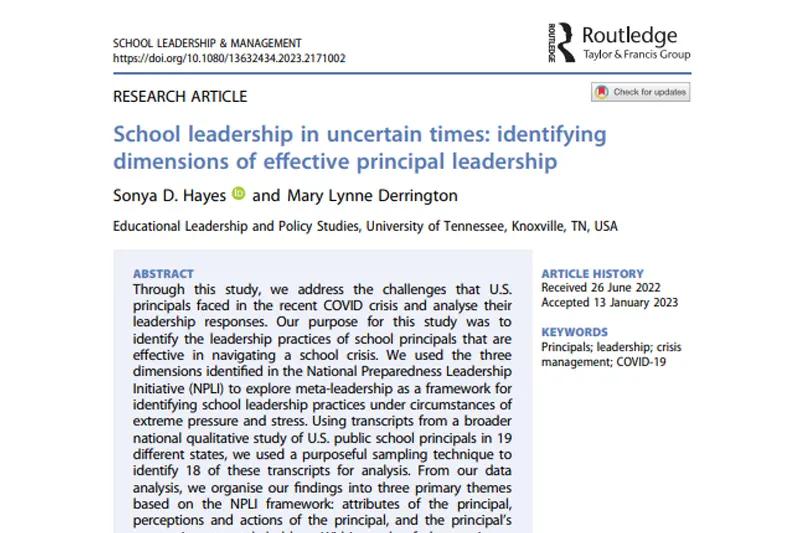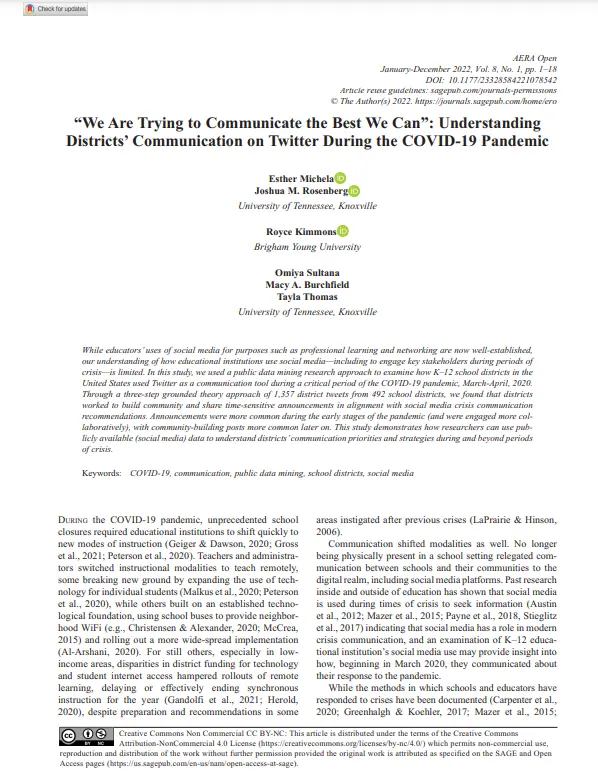Superintendent Job-Seeking Behaviors: Types of Positions Sought and Reasons for Seeking.
Net Tuition, Unmet Financial Need, and Cooling Out: A National Study of Degree Aspirations Among First-Time Community College Students
Trending Up: A Cross-Cohort Exploration of STEM Career and Technical Education Participation by Low-Income Students
Investing in the Workforce: The Impact of Performance-Based Funding on Student Earnings Outcomes
MSUB Visits Andersonville Elementary School
Math and Science Upward Bound students provided community service outreach to Andersonville Elementary School and led a STEM Bridge Building challenge for their summer school participants.
Net Tuition, Unmet Financial Need, and Cooling Out: A National Study of Degree Aspirations Among First-Time Community College Students
The value of informal learning within work-based learning: The economic benefits of WBL
School leadership in uncertain times: identifying dimensions of effective principal leadership
We Are Trying to Communicate the Best We Can
Research by Dr. Joshua M. Rosenberg
Michela, E., Rosenberg, J. M., Kimmons, R., Sultana, O., Burchfield, M. A., & Thomas, T. (2022). “We Are Trying to Communicate the Best We Can”: Understanding Districts’ Communication on Twitter During the COVID-19 Pandemic. AERA Open, 8. https://journals.sagepub.com/doi/full/10.1177/23328584221078542
Educational institutions had to swiftly adapt their instructional methods due to closures caused by various circumstances. Teachers and administrators transitioned to remote teaching, with some embracing technology for individual students and others building upon existing technological foundations. In certain cases, funding disparities in low-income areas hindered effective implementation of remote learning, even though previous crises had prompted preparation and recommendations. Communication also shifted, as the absence of physical school presence led to increased reliance on digital communication methods, including social media platforms. Social media’s role in crisis communication has been recognized through past research, suggesting its importance during times of uncertainty. Analyzing how K-12 educational institutions used social media during the pandemic could offer insights into their communication strategies. The methods used by schools in responding to these challenges varied and were influenced byfactors such as technology availability, funding, and communication choices. This paper discusses how districts can communicate effectively during crises.

